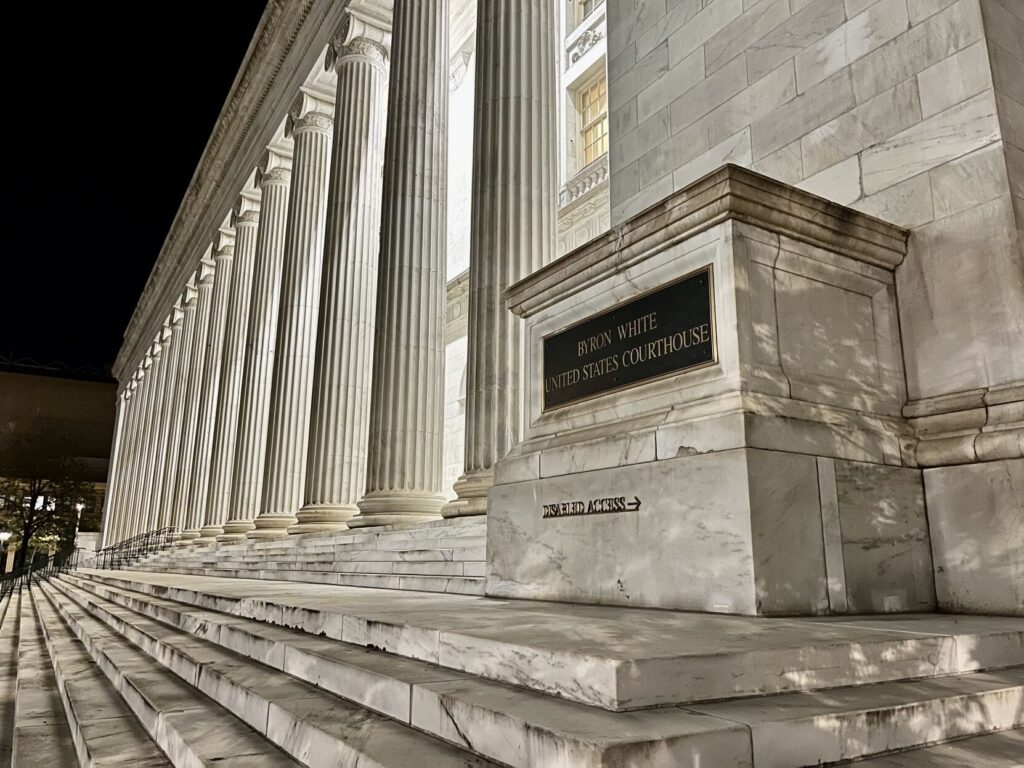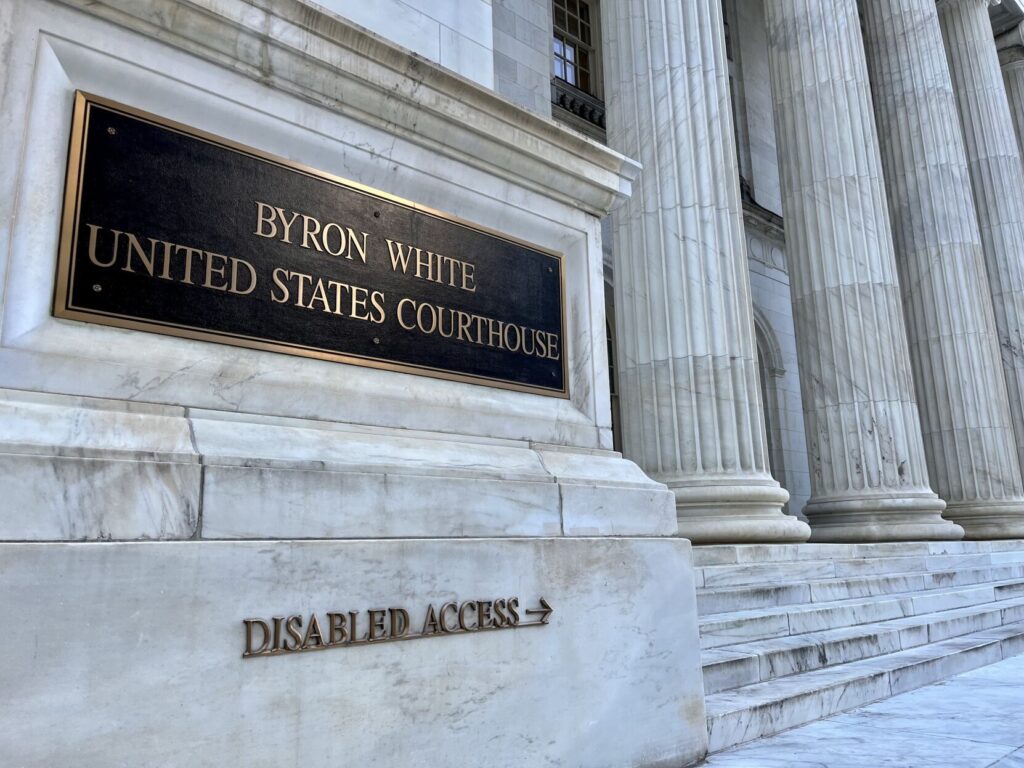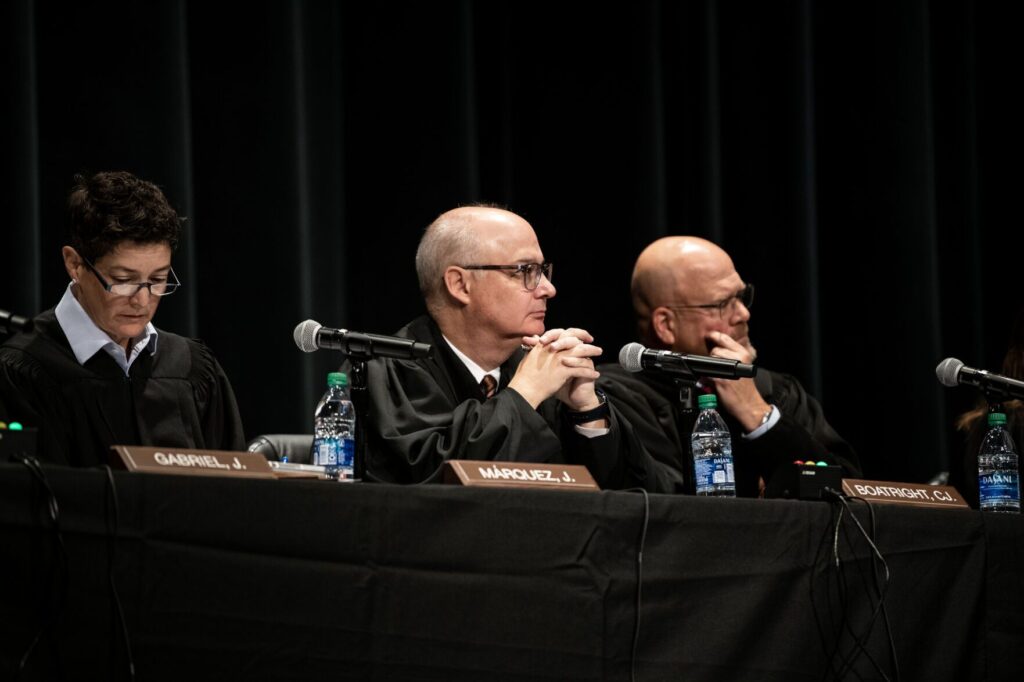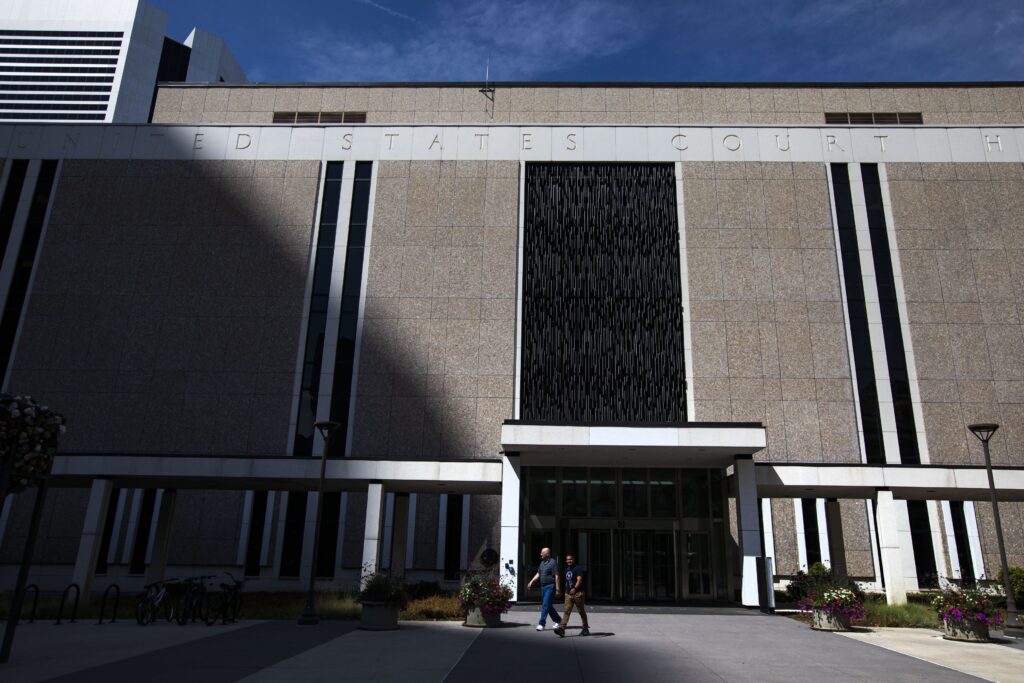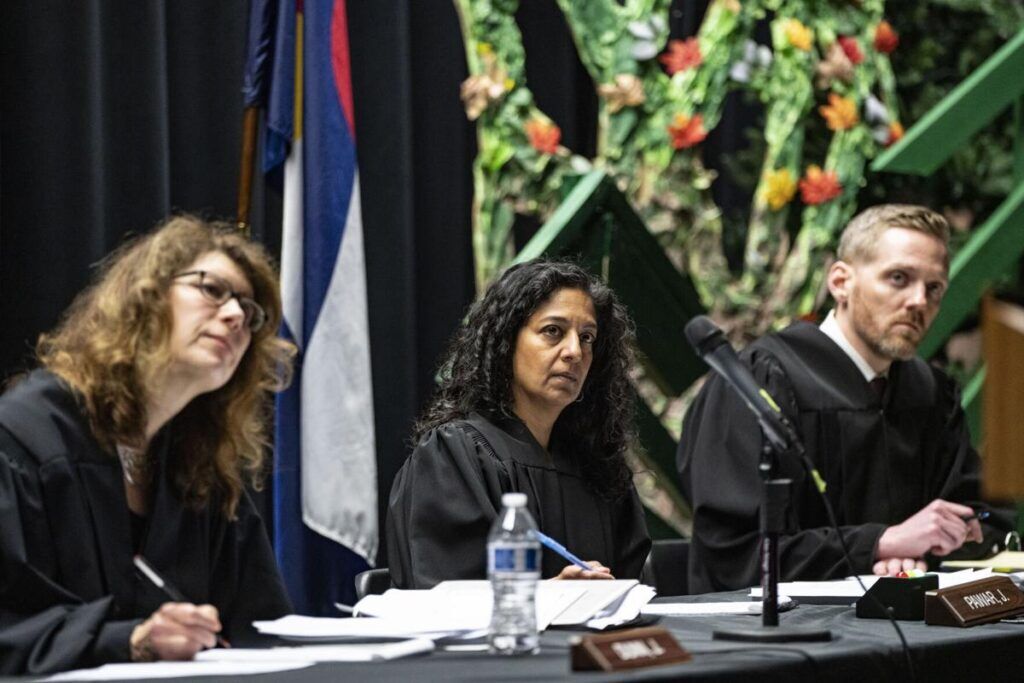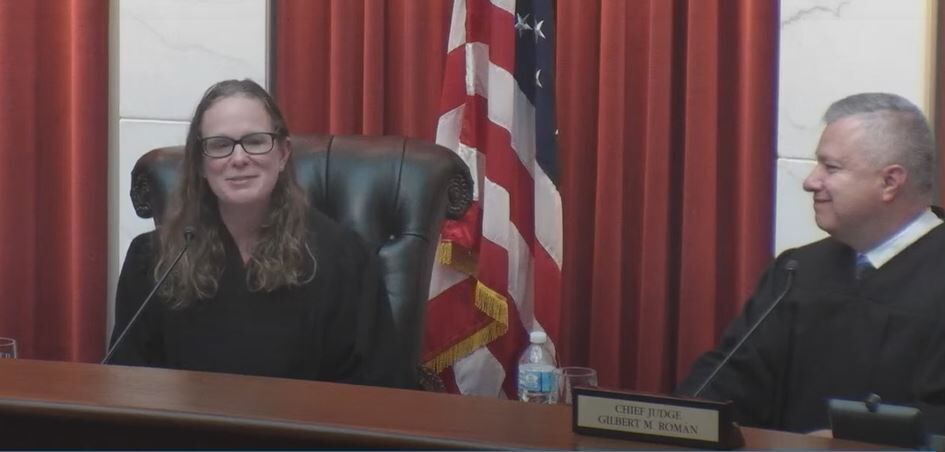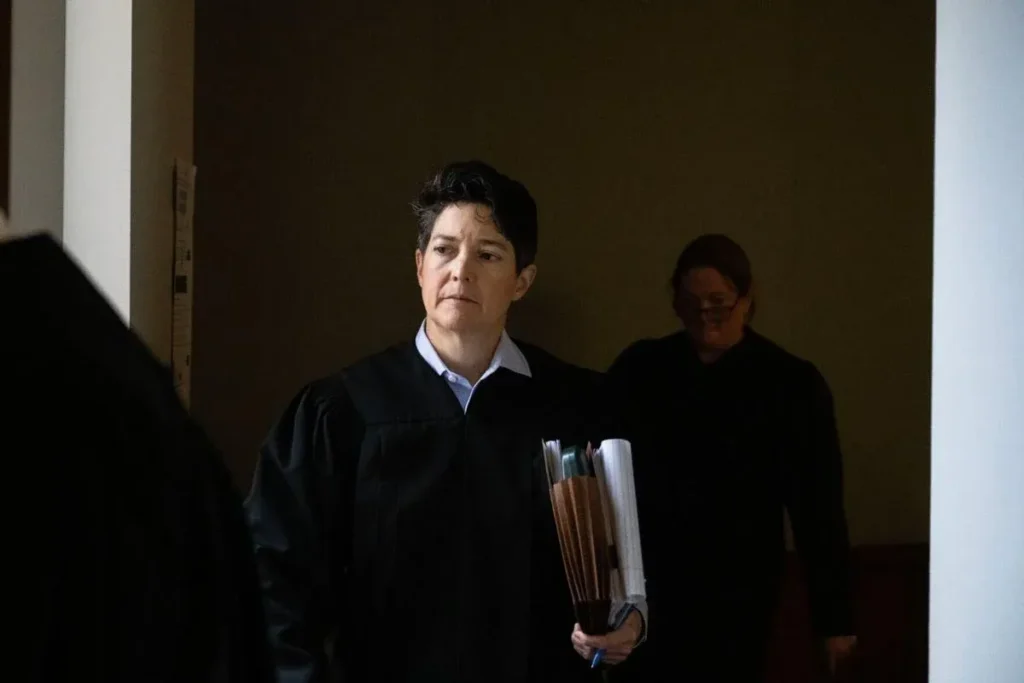Appeals court once again denies immunity to Olathe officer for deadly crash
Exactly one year after the Colorado Supreme Court found the state’s second-highest court applied the incorrect standard when evaluating a deadly crash involving an Olathe police officer, the Court of Appeals once again determined the officer and the town are not immune from being sued.
The Colorado Governmental Immunity Act generally shields government entities and public employees from being sued for their actions, but there is an exception for injuries caused by emergency vehicles. Immunity applies when they exceed the speed limit during a pursuit, but only if the driver is “making use of audible or visual signals.”
It was undisputed that Officer Justin Hice was traveling far above the speed limit and had only turned his lights on five to 10 seconds before he slammed into the van carrying Walter and Samuel Giron. Applying the Supreme Court’s instruction to determine whether the failure to use lights or siren sooner “could have contributed” to the crash, the Court of Appeals said yes, it could have.
“Here, the road was straight, and nothing impaired the visibility of the officer’s emergency lights beyond the distance travelled in the five to ten seconds that the lights were illuminated,” wrote Judge Michael H. Berger in the Feb. 20 opinion. The Girons “might have perceived lights or sirens coming from a car travelling at great speed down the opposite side of the roadway” had they been activated farther away.
Although the three-judge panel was unanimous in that conclusion, Berger took the rare step of writing a separate opinion. He believed the Supreme Court had also directed the Court of Appeals to answer whether Hice could be sued because he did not “refrain from endangering life or property while speeding,” as the immunity law also requires.
Berger felt he was obligated to respect the trial judge’s original conclusion that Hice did not endanger life or property in his high-speed pursuit. But he suggested the Supreme Court should revisit a 25-year-old decision that, in Berger’s view, prevents judges from considering the context of emergency vehicle pursuits.
“The question is, or in my opinion should be, whether Officer Hice acted reasonably in driving at more than 100 miles per hour to make a traffic stop under all of the circumstances presented,” Berger wrote, suggesting the answer was no.
Clarifying immunity for pursuits
In the underlying case, Hice was monitoring traffic along U.S. Highway 50 in July 2018 when he saw a white Toyota exceeding the speed limit. Hice gave chase for 36 seconds, going up to 103 mph. He never activated his siren, but turned on his lights for the final seconds. At an intersection, the Girons’ van turned in front of Hice. He hit the van going at least 75 mph. The Girons died.

The vehicle of Walter and Samuel Giron, who died from their injuries after Olathe Officer Justin Hice collided with them on July 3, 2018. Photo from the appellate brief in Giron v. Hice et al.
Surviving relatives sued Hice and Olathe in Montrose County District Court, but the defendants invoked the governmental immunity law. Chief Judge D. Cory Jackson initially dismissed the lawsuit after finding Hice used his emergency lights and did not create an unreasonable risk of injury in his pursuit. Jackson credited the testimony of current and former police officers over the motorists who Hice passed at high speed and who came close to crashing into Hice themselves.
A three-judge Court of Appeals panel reinstated the lawsuit, finding it did not matter that Hice turned on his lights in the final seconds before impact. Instead, for immunity to apply, Hice needed to have activated his lights or siren as soon as he exceeded the speed limit during the pursuit, the panel decided.
In February 2024, the Supreme Court walked back that broad rule after hearing that the Court of Appeals’ decision meant there would be no immunity at all if an officer failed to activate lights or siren the second he went 1 mph over the speed limit. Instead, the justices concluded emergency vehicle drivers forfeit their immunity “when a plaintiff’s injuries could have resulted from the driver’s failure to use alerts while speeding in pursuit of a suspected or actual lawbreaker,” clarified Justice William W. Hood III.

Justice William W. Hood III speaks to another attendee of Gov. Jared Polis’ 2025 State of the State address on Thursday January 9, 2025 at the Colorado State Capitol. Special to Colorado Politics/John Leyba
The case returned to the same Court of Appeals panel to apply the Supreme Court’s new rule and answer whether the Girons’ deaths could have resulted from Hice’s failure to use lights or siren earlier.
Berger, a retired judge sitting on the panel at the chief justice’s assignment, pointed to crucial testimony in the trial court in which a witness saw the Girons talking to each other before turning in front of Hice’s car.
“A momentary loss of attention can have devastating effects, especially when another vehicle is speeding down the other side of the roadway at over 100 miles per hour. At that speed, things happen very fast,” Berger wrote.
While the panel noted the Girons’ potential distraction may be relevant at trial, it suggested the absence of warning signals farther down the road could have made a difference in preventing the crash.
An invitation for another appeal?
The other members of the panel — Judges Jaclyn Casey Brown and Sueanna P. Johnson — and the plaintiffs did not think the appellate court needed to address whether Hice also endangered life or property. But Berger believed the Supreme Court expected an answer to that question, and chose to write a second solo opinion.
He invoked a decision from 2000 in which the Supreme Court clarified that whether an incident is actually an emergency “has no bearing” on an emergency vehicle operator’s actions. To Berger, that suggested Hice’s “mission” was irrelevant: If Hice believed he was responding to an emergency and his speed did not create an unreasonable risk, he was entitled to immunity.
But, Berger argued, not all emergencies are created equal.

File photo. Photo Credit: artolympic (iStock).
“Even if the officer initially and properly responds to an emergency,” he wrote, “at some point the officer still may unreasonably create a risk of injury or endanger life or property by vastly exceeding the speed limit. It depends on the circumstances.”
Hice “was attempting to stop a motorist who was speeding on Highway 50. Officer Hice clocked the motorist at approximately seventy-six miles per hour in either a forty-five- or fifty-five-mile-per-hour zone,” Berger continued. “To be sure, the motorist violated the law by exceeding the posted speed limit, but Officer Hice had no reason to suspect that driver had committed any other, more serious, offenses.”
Berger suggested the Supreme Court should perhaps hear the case a second time and clarify that an emergency vehicle operator’s purpose in speeding is relevant to whether they endangered life or property.
The case is Giron et al. v. Hice et al.


